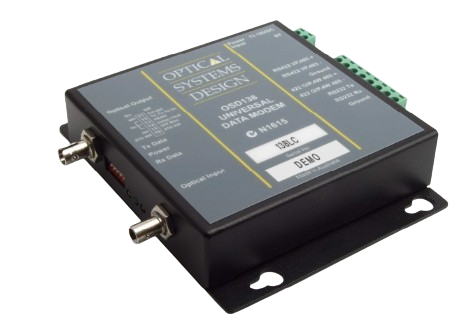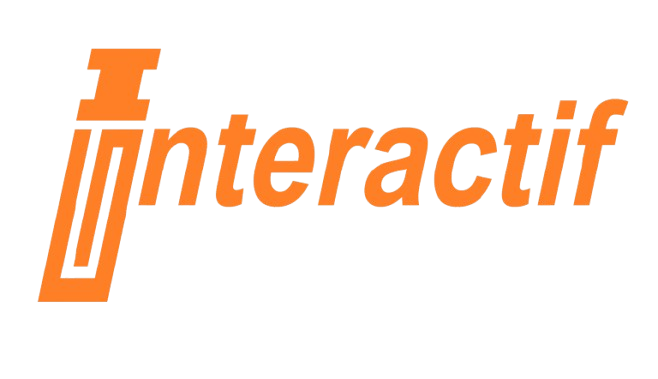Audio video data

INDUSTRIAL & DATA TRANSCEIVERS AND MULTIPLEXERS OSD138 UNIVERSAL DATA TRANSCEIVER
PRODUCT DESCRIPTION
- Multi-protocol operation
- 2 and 4-wire RS485, TTL, RS422, Manchester, Biphase or RS232 operation
- Extends link lengths to 5km on multimode and over 100km on singlemode fiber
- Full duplex, asynchronous, DC to 1Mbps
- Plugs directly into the OSD370 standard chassis
- ST optical connectors standard
- Safe transmission in hazardous environments
- More secure than copper cables
- Robust and reliable

JKINDUSTRIAL & DATA TRANSCEIVERS AND MULTIPLEXERS OSD138 UNIVERSAL DATA TRANSCEIVER
FEATURES AND BENEFITS
- Multi-protocol operation
- 2 and 4-wire RS485, TTL, RS422, Manchester, Biphase or RS232 operation
- Extends link lengths to 5km on multimode and over 100km on singlemode fiber
- Full duplex, asynchronous, DC to 1Mbps
- Plugs directly into the OSD370 standard chassis
- ST optical connectors standard
- Safe transmission in hazardous environments
- More secure than copper cables
- Robust and reliable
APPLICATIONS
- Long distance RS422, RS232 or RS485 links
- Links requiring a module at one end and a card at the other
- Secure, noise immune government and industrial communications
TYPICAL APPLICATION DESIGN

specifications
PERFORMANCE
- Data rate DC to 1Mbps NRZ
- Pulse Distortion and Jitter <±0.3∝S over full dynamic range
OPTICAL SIGNAL
- Wavelength OSD138: 850nm
- OSD138L, OSD138L.WA: 1310nm
- OSD138L.WB: 1550nm
- Coupled Transmit Power
- -18 to -15dB peak into 62.5/125 multimode fiber -18 to -15dBm peak into 10/125 singlemode fiber (OSD138L, OSD138L.WA, OSD138L.WB only)
- Receiver Sensitivity <-37dBm peak for 1 x 10-9 BER
- Optical Link Budget
- >19dB at 850nm (>5km of multimode fiber for OSD138) >19dB at 1300nm, 1550nm (>50km of singlemode fiber for OSD138L, OSD138L.WA, OSD138L.WB)
- Receiver Saturation >-12dBm peak
ELECTRICAL SIGNAL
- Input User selectable between RS422/RS485 levels, TTL on the + input with – input floating or RS232 levels
- User Controls A 6-way user adjustable lever switch controls:
- RS422/RS232 or RS485
- RS232 polarity
- 2-wire or 4-wire RS485
- RS485 bias on/off
- RS485 turnaround times
PIN CONFIGURATION
- Pin 1 Data Input or I/O+ (To OSD138) Pin 5 Data Output – (From OSD138)
- Pin 2 Data Input or I/O – (To OSD138) Pin 6 RS232 Input (To OSD138)
- Pin 3 Ground Pin 7 RS232 Output (From OSD138)
- Pin 4 Data Output + (From OSD138) Pin 8 Ground
PHYSICAL
- Electrical Connectors 9 pin male subminiature D connector for power on card
- 2 way terminal block with screw clamps for power on module
- 8 way terminal block with screw clamps for data
- Optical Connector ST standard
- Operating Temperature -20 to +75oC
- Relative Humidity 0 to 95% non-condensing
- Power Requirements +11 to +35VDC or 22 to 28VAC @ 1.8VA
- Weight 150g (card)
- 280g (module)
- Dimensions(mm) 208D x 25W x 100H (card)
- 104D x 104W x 25H (module)
- Chassis Current Consumption (CCC) 0.15 Amp
Request a Quote
Learn More From
Frequently Asked Questions
Multimode fiber commonly comes in 50/125 μm or 62.5/125 μm core/cladding dimensions, with bandwidth capacities ranging from 200 MHz to 2 GHz, depending on the grade. Multimode systems typically support transmission distances of up to 5 km, making them suitable for short- to medium-range applications.
In contrast, singlemode fiber—usually 9–10/125 μm—offers significantly lower attenuation and effectively unlimited bandwidth, supporting links over 150 to 200 km, especially when paired with optical amplifiers and advanced transceivers.
While singlemode fiber is less expensive per meter, its associated transceivers and equipment tend to cost more than their multimode counterparts. That said, singlemode devices are generally compatible with both singlemode and multimode fiber, whereas multimode equipment works only with multimode fiber.
Let me know if you’d like this turned into a quick-reference table or visual comparison—it’d make a solid inclusion for a fiber deployment guide.
The link budget is the difference between the transmitter’s output power and the receiver’s sensitivity. This budget must account for all signal losses along the path, including:
- Fiber attenuation due to the transmission medium
- Connector losses, such as those at patch panels or equipment interfaces
- Splice losses from mechanical or fusion joints
- Link margin, which provides a buffer for unforeseen variations
The link margin typically ranges from 2–3 dB in tightly controlled environments to up to 10 dB in more variable conditions. It is designed to accommodate:
- Component aging (e.g., light sources may degrade and lose up to 3 dB over time)
- Temperature variations affecting transmitter output or receiver sensitivity (up to 3 dB may be needed for thermal fluctuations)
- Physical cable damage and repair-induced losses (usually minor, but more relevant in harsh or industrial settings)
Always design your system for worst-case scenarios to ensure reliability. However, don’t overlook the best-case condition either—some optical receivers may exhibit erratic behavior if the incoming signal is too strong.
First, verify the optical signal strength along the link. Use an optical power meter to measure the received power at the fiber’s end point. Typical transmit levels range from –8 dBm to –15 dBm, while the receiver sensitivity is around –31 dBm, giving you a link budget of approximately 16 dB. This margin supports transmission distances of up to 10 km on singlemode fiber and about 3–5 km on multimode fiber.
If the measured power falls below the receiver sensitivity, there’s a strong likelihood of issues with the installed fiber. Ideally, initial OTDR readings should have flagged such faults.
If not, inspect the patch cords currently in use for possible defects or misalignment. A frequent oversight is the use of mismatched patch cords.
Multimode fiber types are classified by the ISO/IEC 11801 standard into five main categories: OM1, OM2, OM3, OM4, and OM5. Each type differs in core size, bandwidth, supported data rates, and maximum transmission distances. Here’s a quick breakdown:

- OM3 and OM4 are laser-optimized and widely used in modern data centers.
- OM5 supports shortwave wavelength division multiplexing (SWDM), enabling multiple wavelengths over a single fiber for higher capacity.
- All OM types are backward compatible in terms of connectors, but mixing core sizes (e.g., OM1 with OM3) can cause performance issues.
